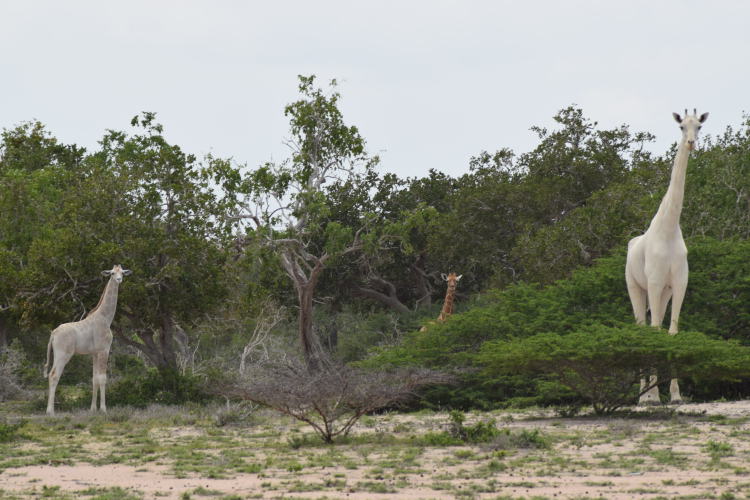
They were considered the rarest giraffes seen on earth. Sadly, from this day on, there won't be any sight of them after poachers killed them. The remains of the two strikingly white giraffes that lived at the wildlife sanctuary in Kenya were discovered at a skeletal stage.
This was reported by Ishaqbini Hirola Conservancy rangers on Tuesday. According to the conservationists' report, the "mother giraffe and her calf" got killed by poachers.
Relatively, the Kenya Wildlife Service was summoned to the reserve following reports that the rare white giraffes had not been seen for quite some time.
Upon discovery of the bones, officials of the wildlife approximated, they had been there for roughly four months.
Mohammed Ahmednoor, the manager of a reserve in Garissa County said, this is quite a sad day for both Kenya and Ijara community, as a whole. He added, "We are the only community in the world" considered as the white giraffes' custodians.
ALSO READ : Guam Rails Exist, but Quite a Challenge to Find
Third White Giraffe Remains Alive
On a lighter note, a third white giraffe remains alive. However, the conservationists shared, it is believed to be the only living white giraffe in the whole world. The two giraffes that got killed by the still unidentified poachers and whose motive remain unclear were reportedly last spotted about more than three months ago.
Also, the two's killing, according to Ahmednoor, is a blow to the remarkable steps which the community has taken to conserve unique and rare species. It is a wake-up call too, for continued support for the conservation initiatives.
Meanwhile, these giraffes' white appearance is because of their unusual condition also known as "leucism," causing the skin cells to "have no pigmentation."
Meanwhile, news about these rare wildlife creatures spread around the globe after they were pictured in 2017. And with regards to the death of the two white giraffes, the Kenya Wildlife Society said, a thorough investigation of the killing was being conducted.
Leucism Explained
Incidentally, leucism hinders coloration in some skin cells. This is not the same as albinism where this is totally no melanin produced. In relation to this, animals that have leucism may experience "darker pigment in their soft tissue." Giraffes that have it, on the other hand, maintain their dark eyes, while animals that have albinism possess pink eyes.
First Appearance of the White Giraffes
The first time white giraffes were spotted in Kenya was in 2016. This happened about two months from their sighting in neighboring Tanzania. This was indicated on the conservancy's website. In addition, according to the Africa Wildlife Foundation, around 40% of the population of giraffes has disappeared during the last three decades, not to mention, poaching for skin and meat continues.
The population dropped from 155,000 in 1985, to 97,000 in 2015. This was reported by the International Union for the Conservation of Nature (IUCN).
In August last year, BBC posted an article containing the report that Giraffes were "given greater protection from unregulated trade" as the figures drop.
The initiative to conserve giraffes had has taken a huge step ahead with the tallest living mammals of the world, getting improved protection. This move is set to regulate the giraffes, including the parts of their body under the Convention on International Trade in Endangered Species (Cites).
© 2025 ScienceTimes.com All rights reserved. Do not reproduce without permission. The window to the world of Science Times.











